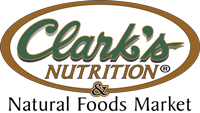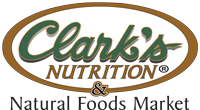Gluten Free
What does following a gluten-free diet mean? That you're embarking on an easy diet with a wide range of health-promoting effects. Instead of dwelling on what you’re giving up, consider that you’re going to enjoy a whole new world of delicious food options to meet your special dietary needs. You’ll be eating seasonally, choosing more fresh fruits and vegetables, focusing on meats, seafood, poultry, legumes, lentils, corn, and rice, and discovering fascinating ancient grains such as quinoa, amaranth, and millet. You’ll be able to eat potatoes, eggs, most cheeses, even chocolate (!)—and enjoy them without guilt because you’ll be taking good care of your body. In fact, you’ll probably end up eating—and feeling—better than ever!
Visit this page for more information about living Gluten Free
---
We carry a large variety of gluten free items, the brands listed below represent just some of the offerings we carry


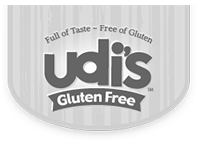



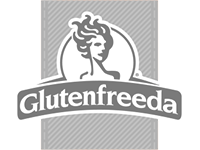





Raw Foods
“Raw” is all the rage these days, but what does it mean to eat raw? And is it possible to get enough protein and other nutrients while following a raw diet?
Raw foods are those that have not been heated above 108°F to 118°F
Raw, defined
Most raw foodists eat only plant-based (vegan) foods, including vegetables, fruits, nuts, seeds, legumes, and seaweed. Raw foods are those that have not been heated above 108°F to 118°F, depending on who you talk to. The logic behind this is that many of the nutrients in foods are extremely sensitive to heat. This is especially true of the water-soluble vitamins, like the B-vitamins, folate, and vitamin C. As Katie McDonald, a raw food chef and certified Holistic Health Coach in Rhode Island puts it, “The more you do to a food, the less it does for you.”
Raw food advocates also look to the enzyme content of raw foods, saying that cooking destroys delicate enzymes that could otherwise go toward improving the digestion of the foods you’re eating.
---
In addition to our always fresh produce, we carry many more raw foods throughout our stores. Look for these brands and our Raw Foods section for more.

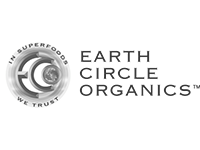

More Diets
Ciprofloxacin
Pronounced
"sip-row-FLOX-ah-sin"
Common brand names:
Cipro
Uses
This medication is used to treat a variety of bacterial infections. Ciprofloxacin belongs to a class of drugs called quinolone antibiotics. It works by stopping the growth of bacteria.
This antibiotic treats only bacterial infections. It will not work for virus infections (such as common cold, flu). Using any antibiotic when it is not needed can cause it to not work for future infections.
How to Use This Medication
Read the Medication Guide and, if available, the Patient Information Leaflet provided by your pharmacist before you start taking ciprofloxacin and each time you get a refill. If you have any questions, ask your doctor or pharmacist.
Take this medication by mouth with or without food as directed by your doctor, usually twice a day (every 12 hours).
The tablet may have a bitter taste if you chew or crush it before taking it. Do not split the tablets unless they have a score line and your doctor or pharmacist tells you to do so. The manufacturer recommends swallowing the whole or split tablet without crushing or chewing.
The dosage and length of treatment is based on your medical condition and response to treatment. Drink plenty of fluids while taking this medication unless your doctor tells you otherwise.
Take this medication at least 2 hours before or 6 hours after taking other products that may bind to it, decreasing its effectiveness. Ask your pharmacist about the other products you take. Some examples include: quinapril, sevelamer, sucralfate, vitamins/minerals (including iron and zinc supplements), and products containing magnesium, aluminum, or calcium (such as antacids, calcium supplements).
Calcium-rich foods, including dairy products (such as milk, yogurt) or calcium-enriched juice, can also decrease the effect of this medication. Take this medication at least 2 hours before or 6 hours after eating calcium-rich foods, unless you are eating these foods as part of a larger meal that contains other (non-calcium-rich) foods. These other foods decrease the calcium binding effect.
Ask your doctor or pharmacist about safely using nutritional supplements/replacements with this medication.
For the best effect, take this antibiotic at evenly spaced times. To help you remember, take this medication at the same time(s) every day.
Continue to take this medication until the full prescribed amount is finished, even if symptoms disappear after a few days. Stopping the medication too early may result in a return of the infection.
Tell your doctor if your condition lasts or gets worse.
Copyright © 2025 TraceGains, Inc. All rights reserved.
RxAnswers™ is a copyrighted combined product from TraceGains and First DataBank, Inc.
Drug information is selected from data included with permission and copyrighted by First DataBank, Inc. This is a summary and does not contain all possible information about this product. For complete information about this product or your specific health needs, ask your healthcare professional. Always seek the advice of your healthcare professional if you have any questions about this product or your medical condition. This information is not intended as individual medical advice and does not substitute for the knowledge and judgment of your healthcare professional. This information does not contain any assurances that this product is safe, effective or appropriate for you.
This information is intended only for residents of the United States. Products sold under the same brand names in other countries may contain different ingredients.
Learn more about First DataBank
There are some limitations on the information provided in “Nutrient Interactions.” Do NOT rely solely on the information in this article. Please read the disclaimer.
Learn more about TraceGains, the company.
TraceGains and/or its suppliers make no warranties or representations as to the accuracy or completeness of this content herein or that of any organization referred or linked to within this content and will not be liable for any damages arising out of your access to or use of any information found herein or that of any organization referred to within this content.
Information expires December 2025.

